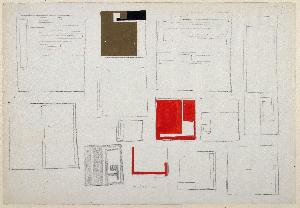Bruno Munari
Bruno Munari
Lugar: Milan
Nascido: 1907
Morte: 1998
Biografia:
Bruno Munari (24 October 1907 in Milan – 29 September 1998 in Milan) was an Italian artist, designer, and inventor who contributed fundamentals to many fields of visual arts (painting, sculpture, film, industrial design, graphic design) in modernism, futurism, and concrete art, and in non-visual arts (literature, poetry) with his research on games, didactic method, movement, tactile learning, kinesthetic learning, and creativity. He was one of the greatest actors of 20th-century art, design and graphics. He was born in Milan but spent his childhood and teenage years in Badia Polesine, where his family had relocated to run a hotel. In 1926 he returned to Milan where he started to work with his uncle, who was an engineer. In 1927, he started to follow Marinetti and the Futurist movement, displaying his work in many exhibitions. Three years later he associated with Riccardo Castagnedi (Ricas), with whom he worked as a graphic designer until 1938. During a trip to Paris, in 1933, he met Louis Aragon and André Breton. From 1938 to September 1943 he worked as a press graphic designer for Mondadori, and as art director of Tempo Magazine and Grazia, two magazines owned by Mondadori. At the same time he began designing books for children, originally created for his son Alberto. After World War II Munari disassociated himself with Italian Futurism because of its proto-Fascist connotations. In 1948, Munari, Gillo Dorfles, Gianni Monnet and Atanasio Soldati, founded Movimento Arte Concreta (MAC), the Italian movement for concrete art. During the 1940s and 1950s, Munari produced many objects for the Italian design industry, including light fixtures, ashtrays, televisions, espresso machines, and toys among other objects. In his later life, Munari, worried by the incorrect perception of his artistic work, which is still confused with the other genres of his activity (didactics, design, graphics), selected art historian Miroslava Hajek as curator of a selection of his most important works in 1969. This collection, structured chronologically, shows his continuous creativity, thematic coherence and the evolution of his aesthetic philosophy throughout his artistic life.



